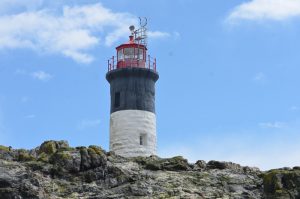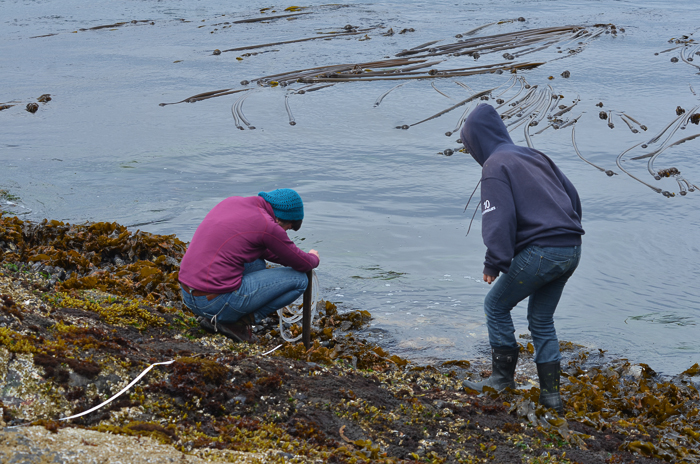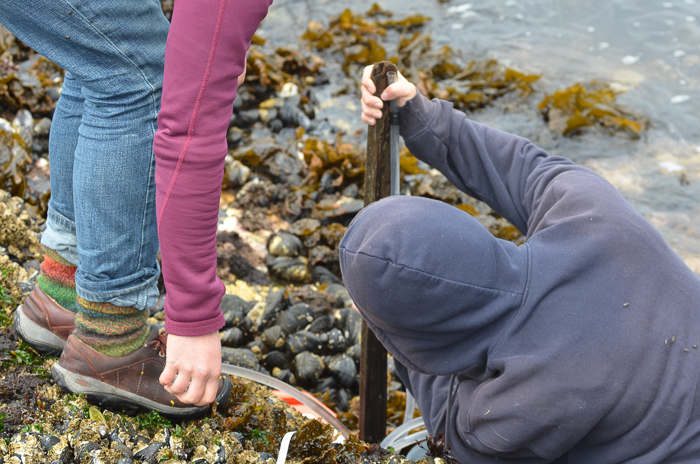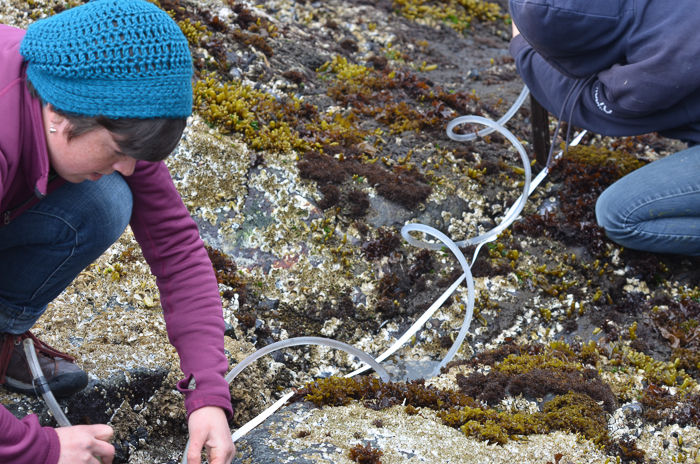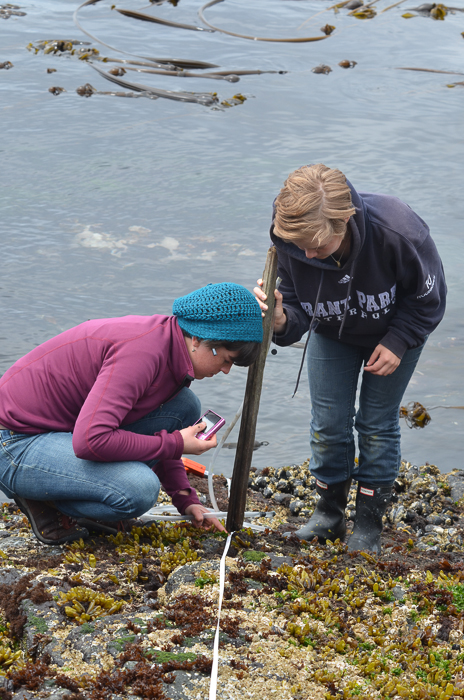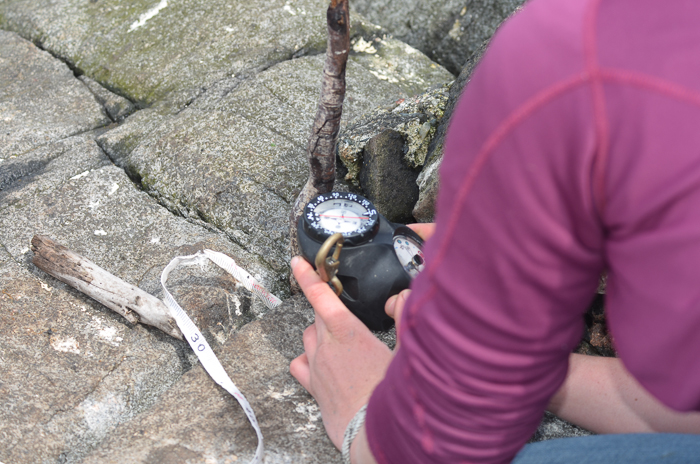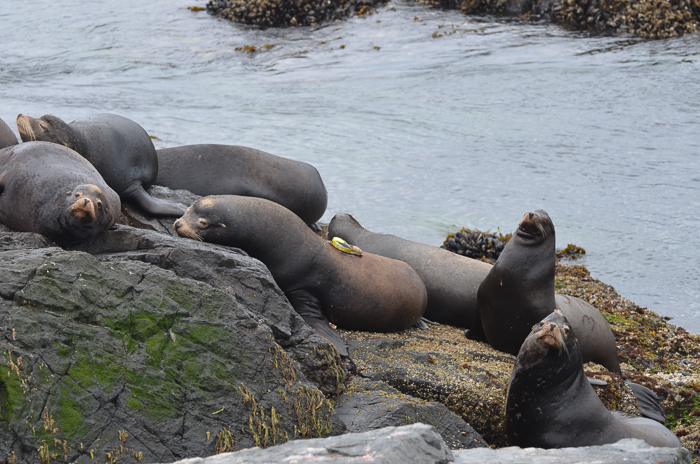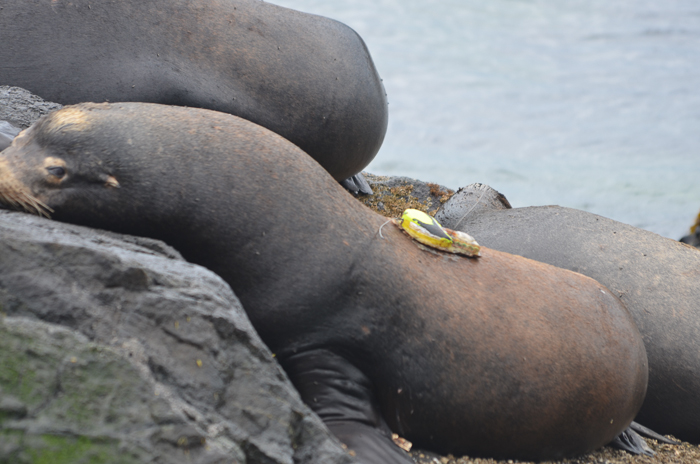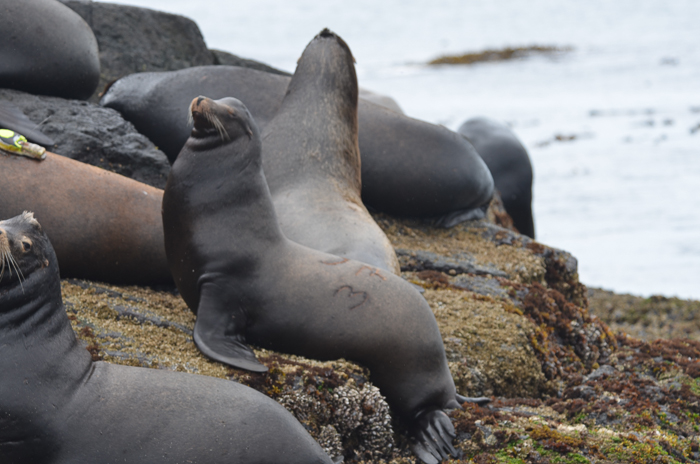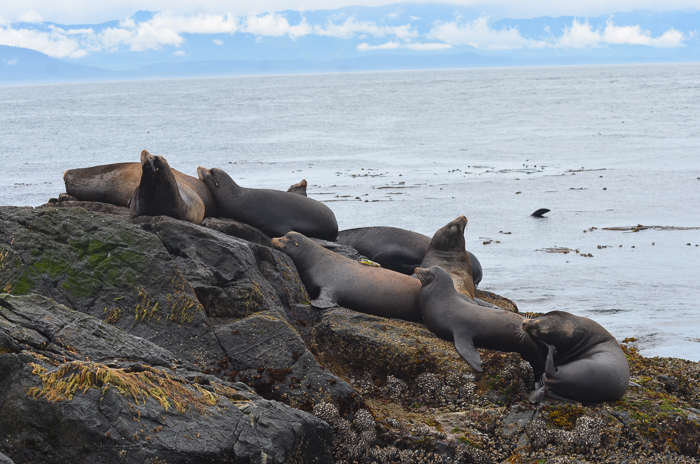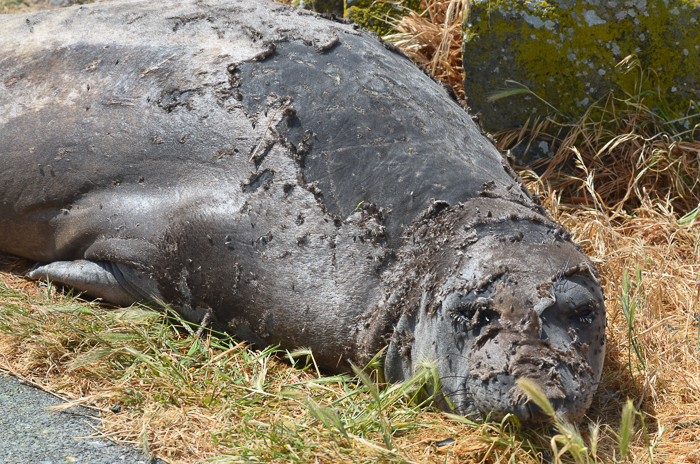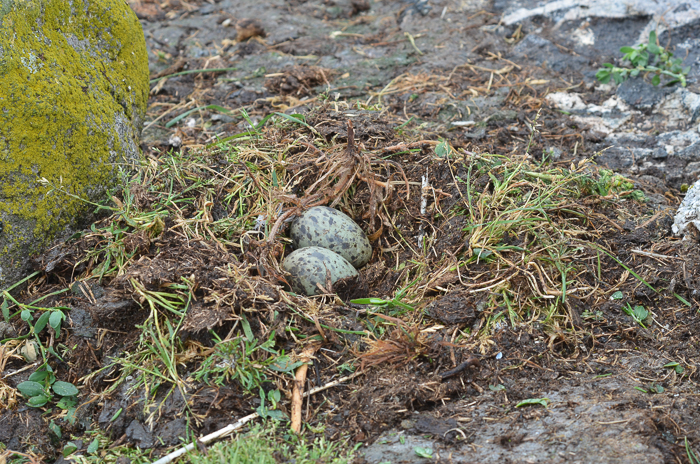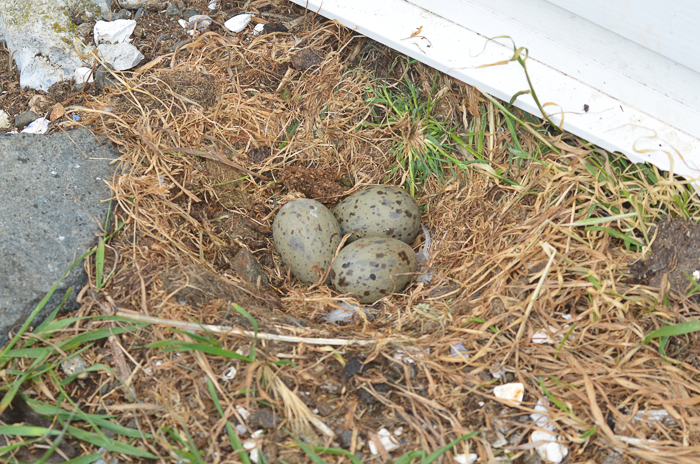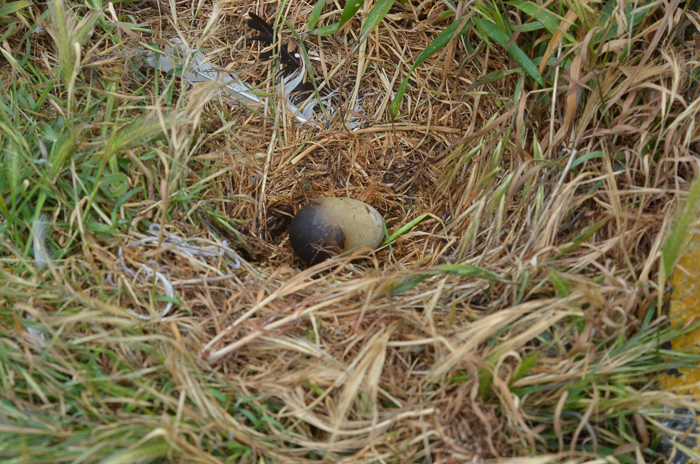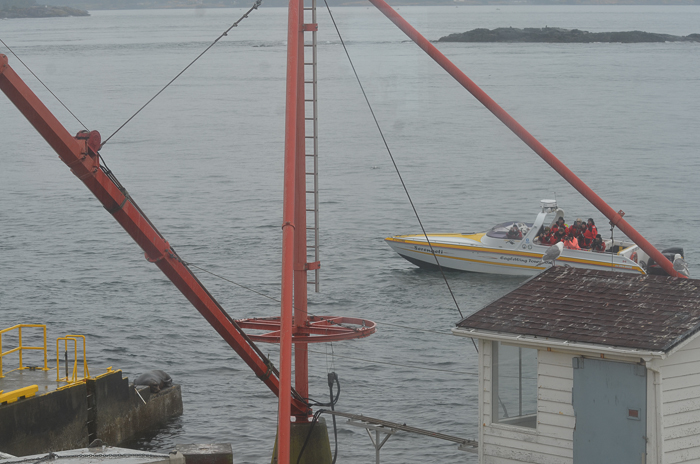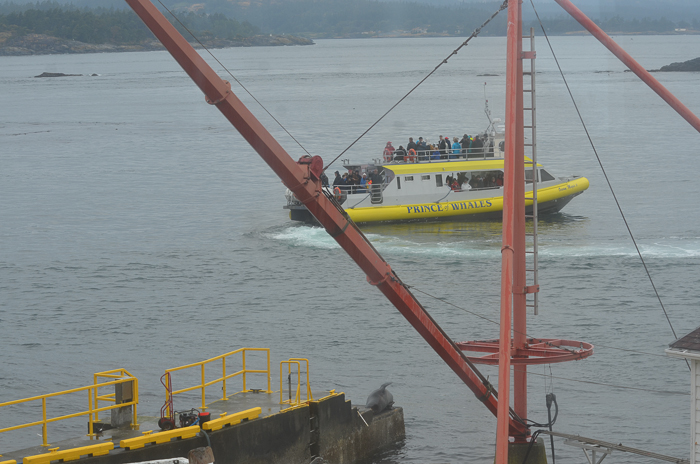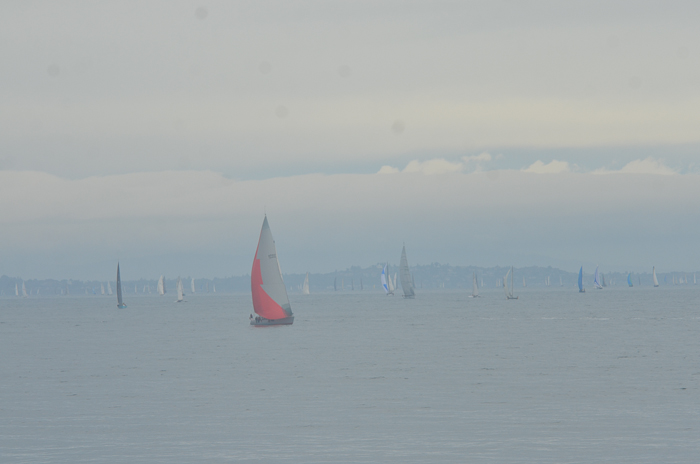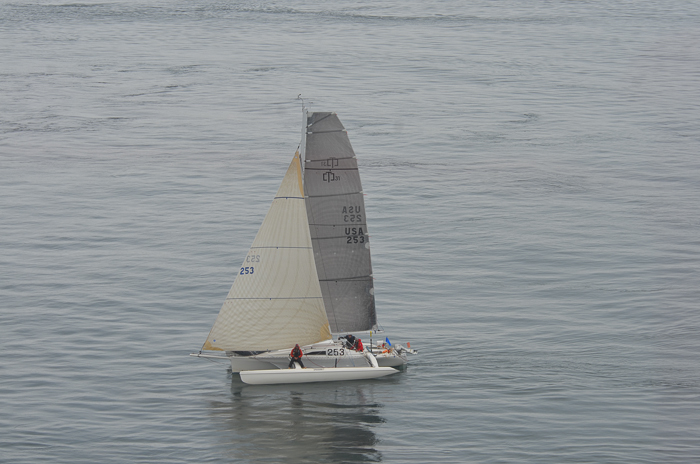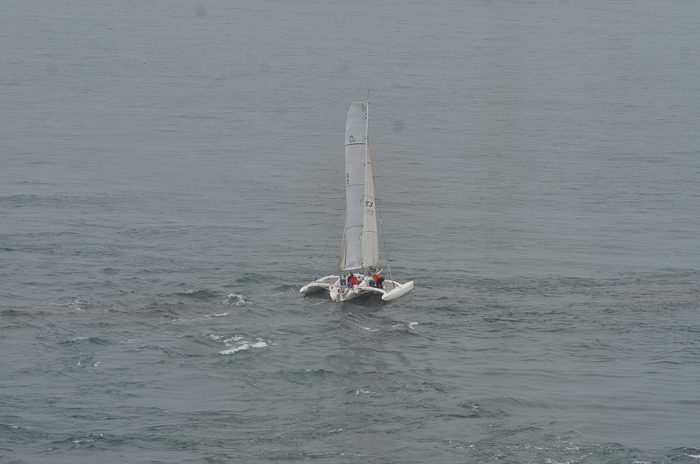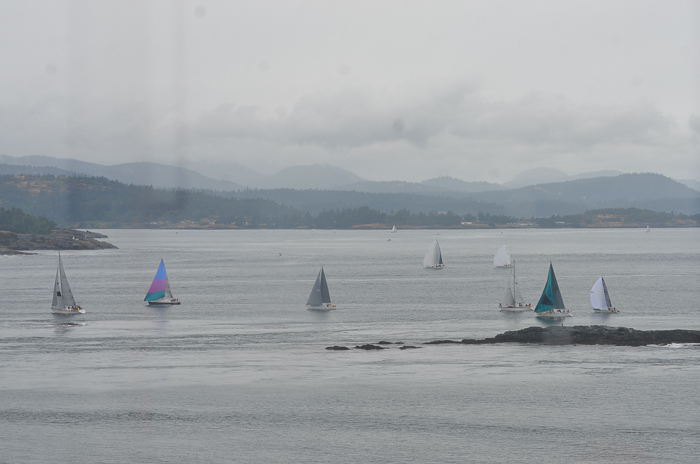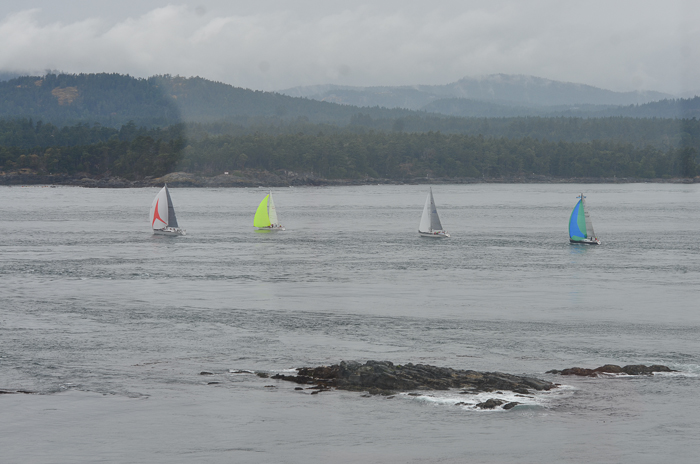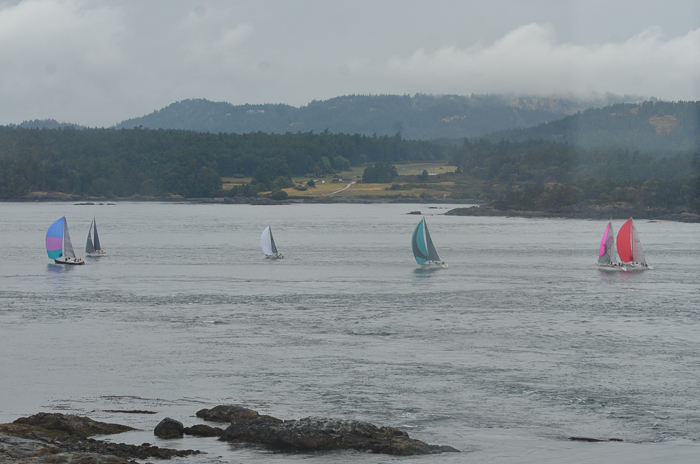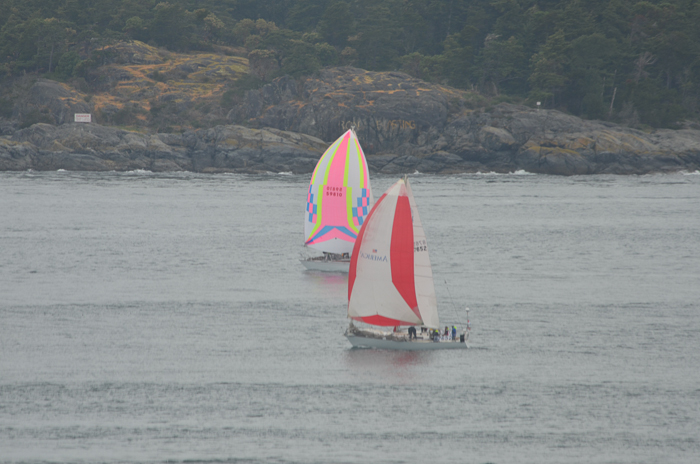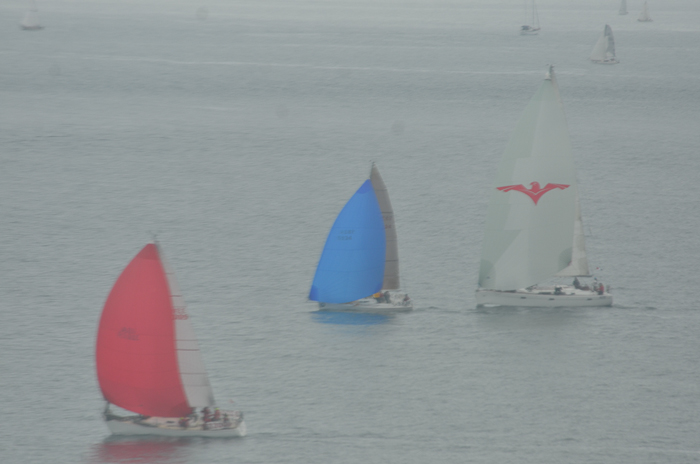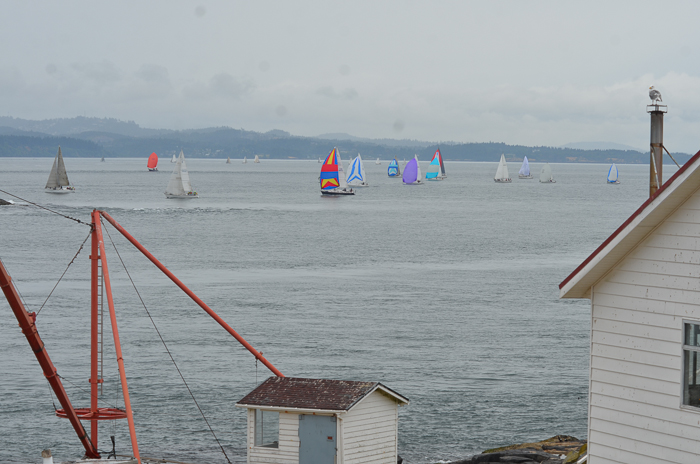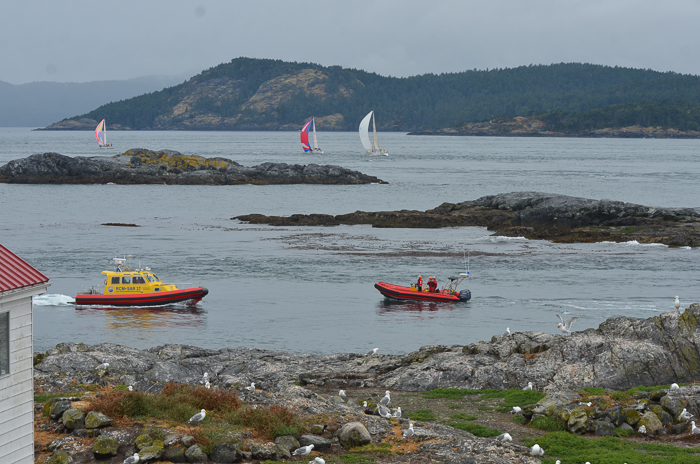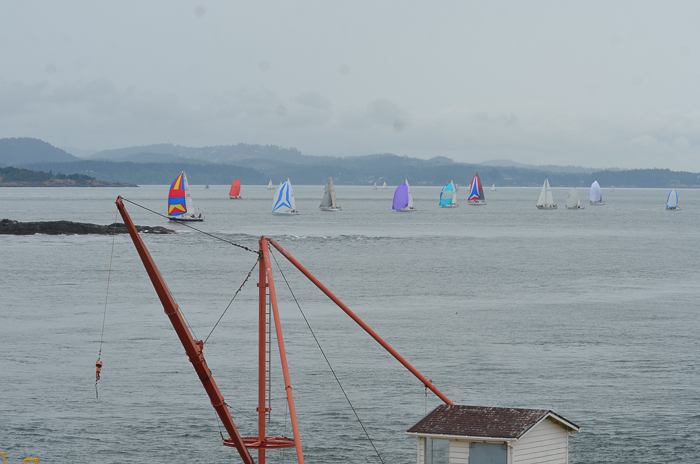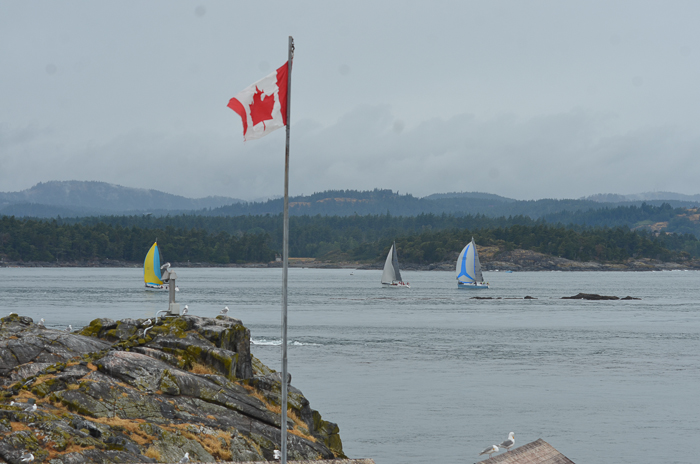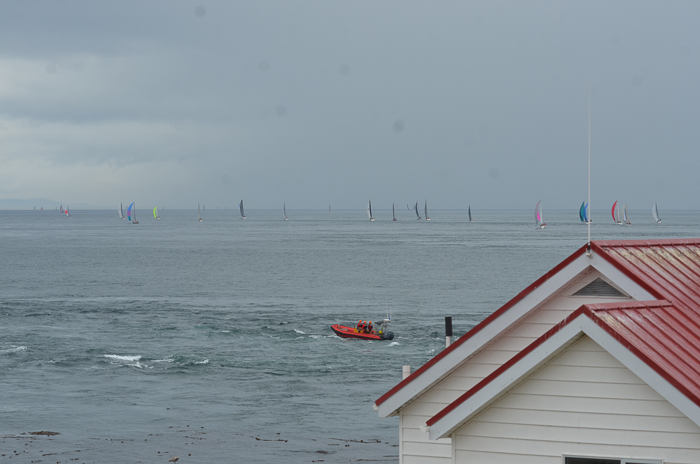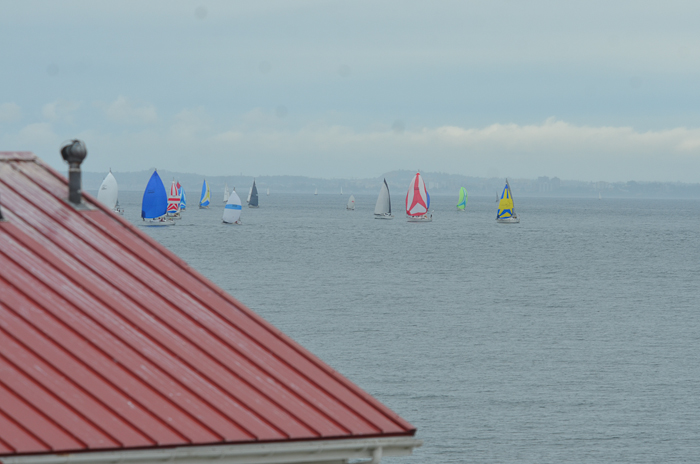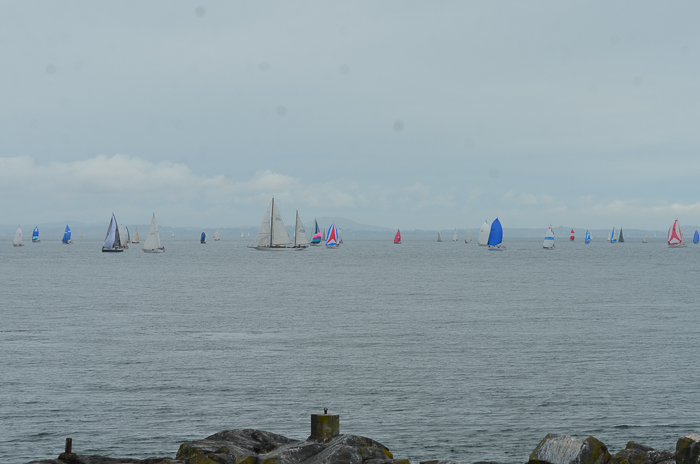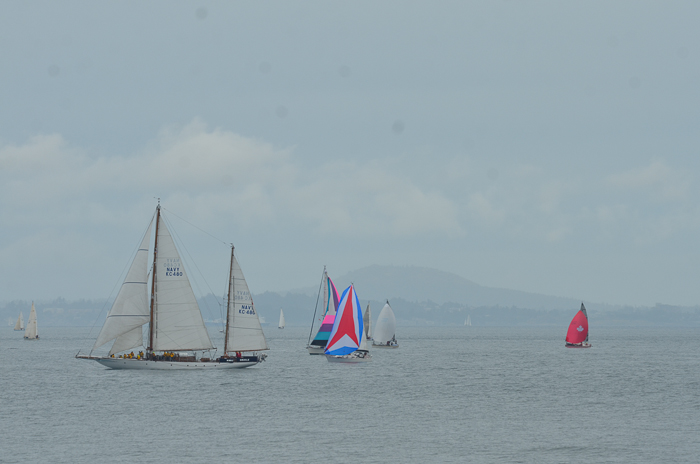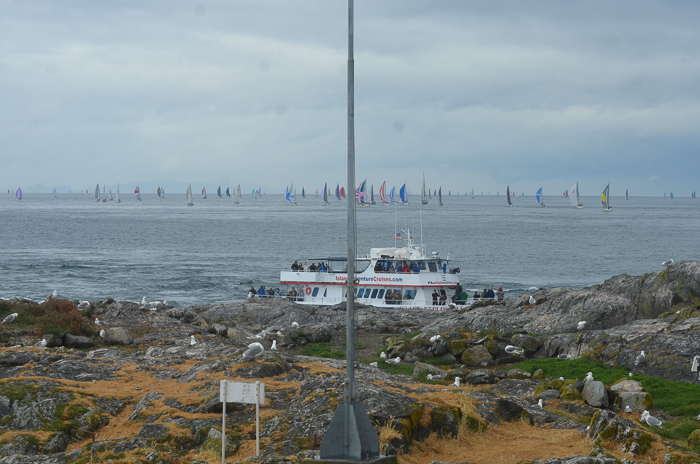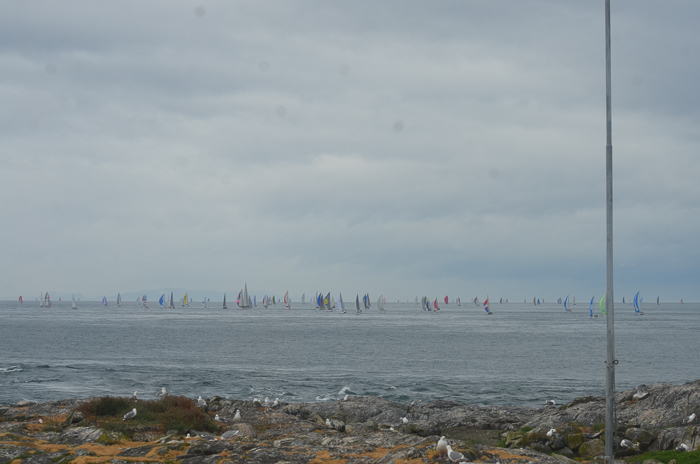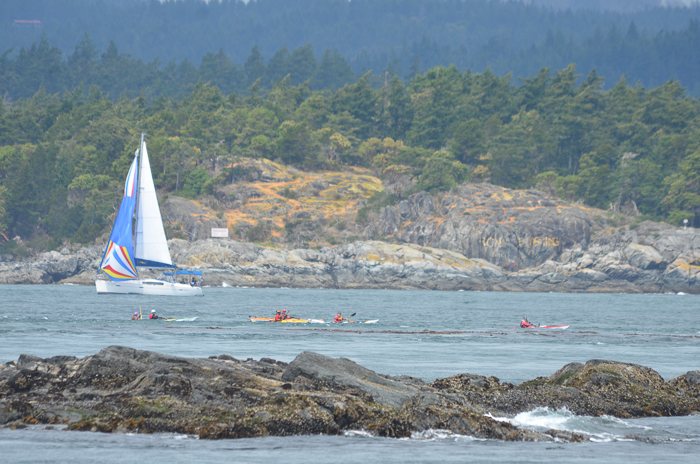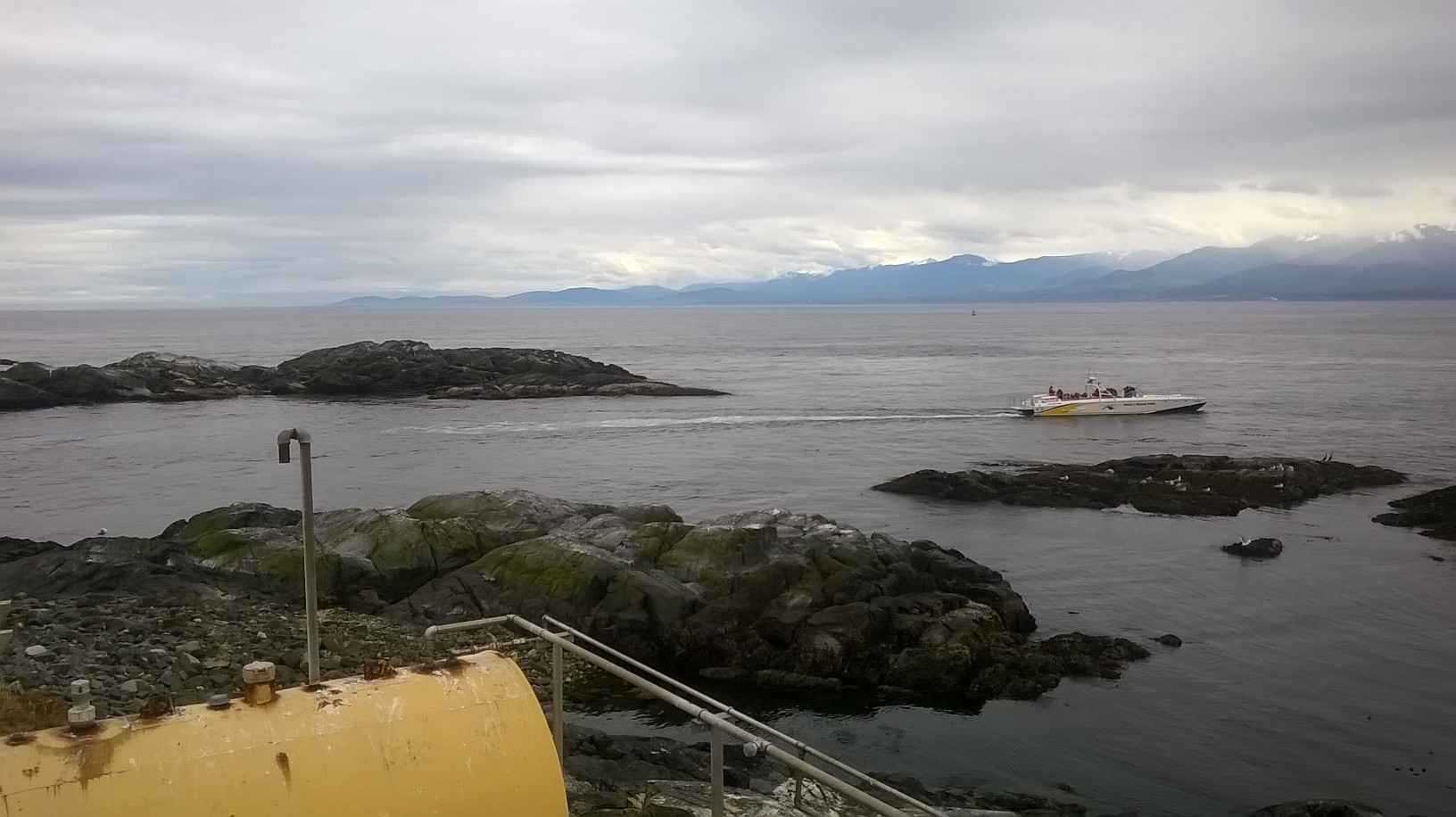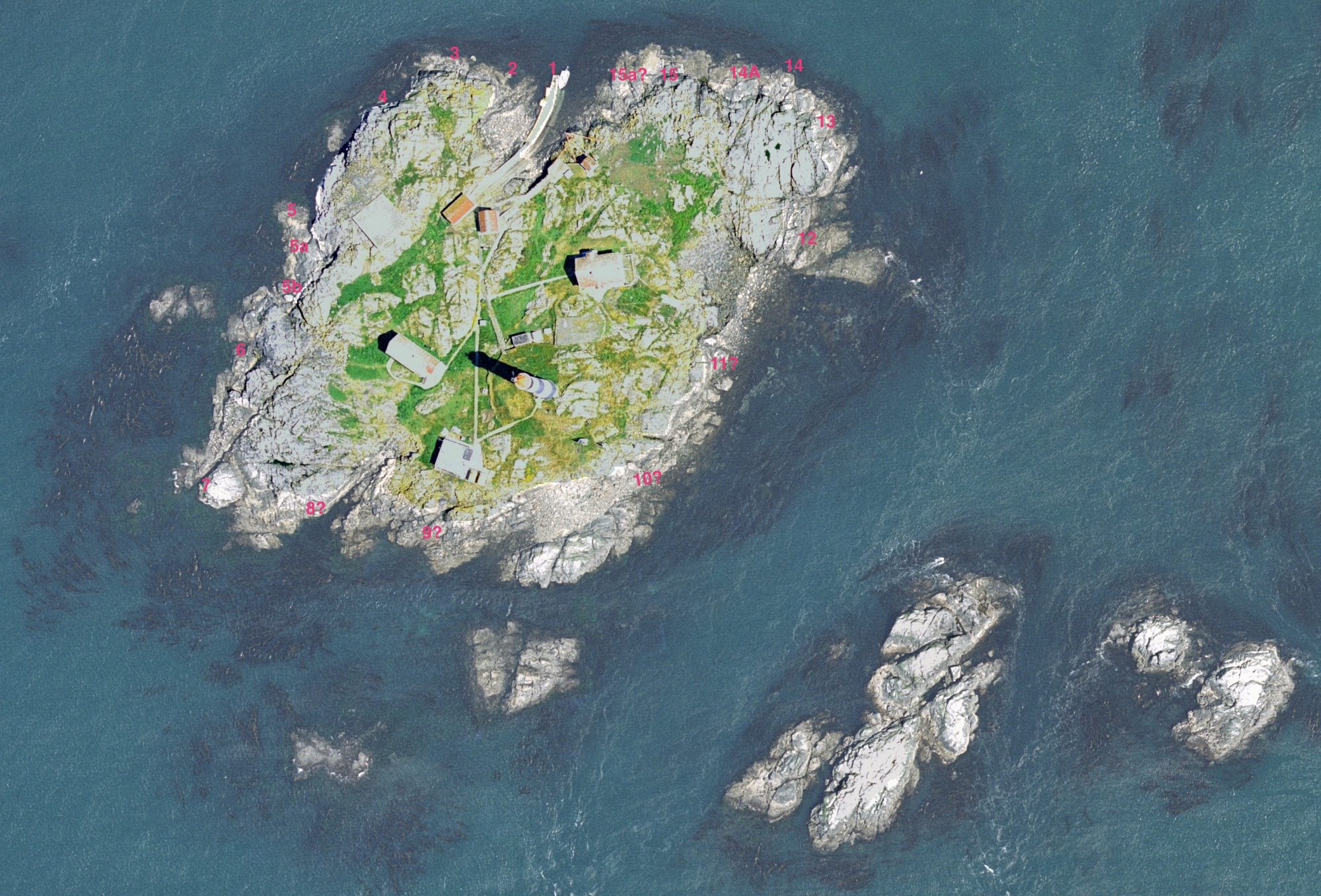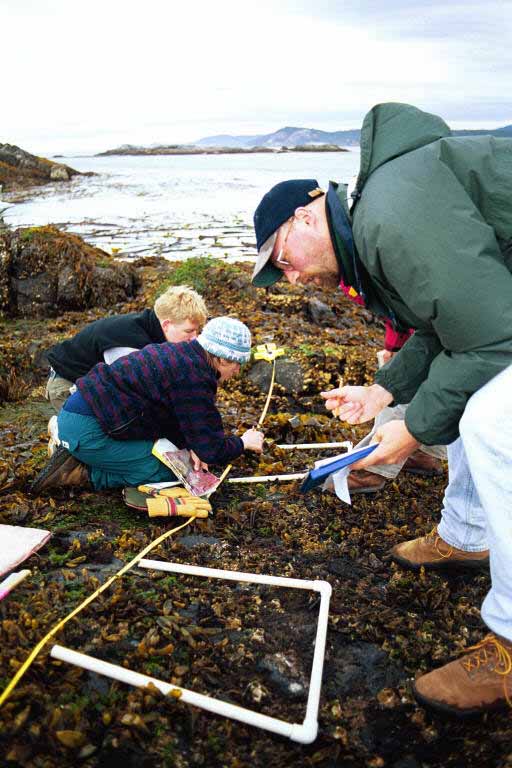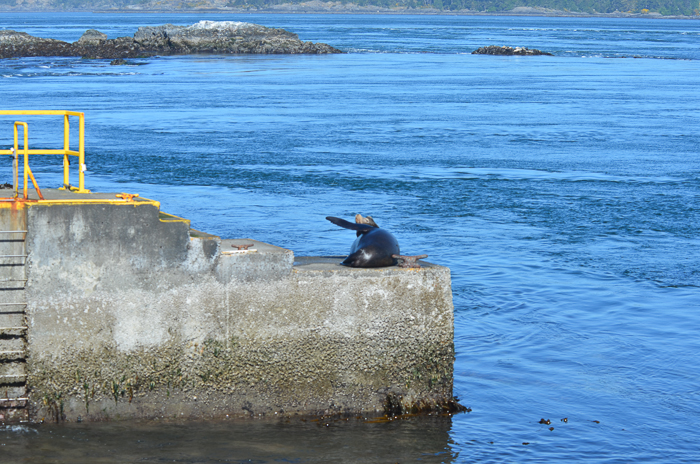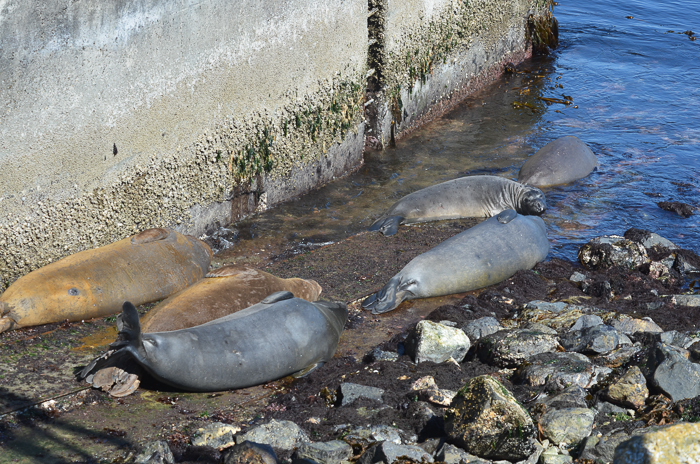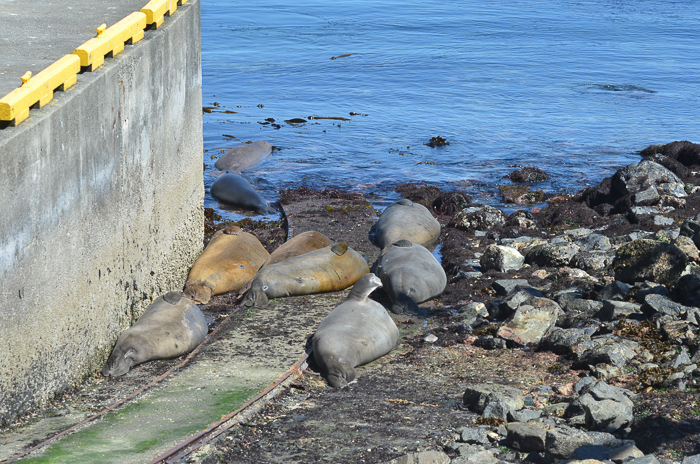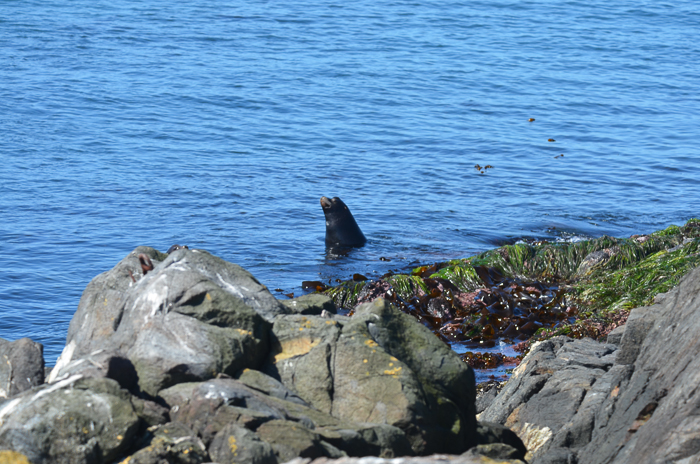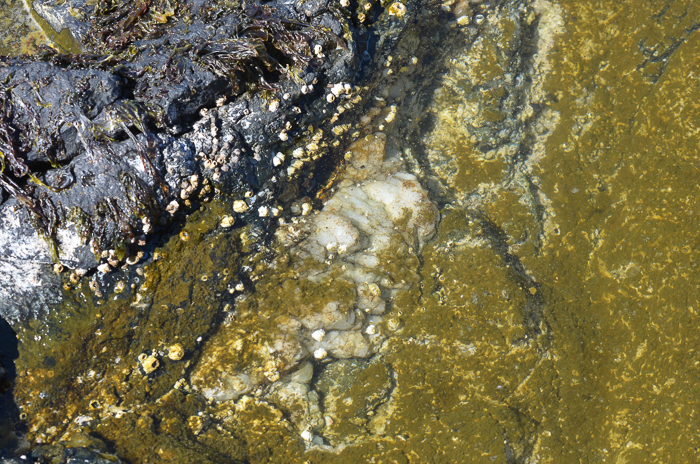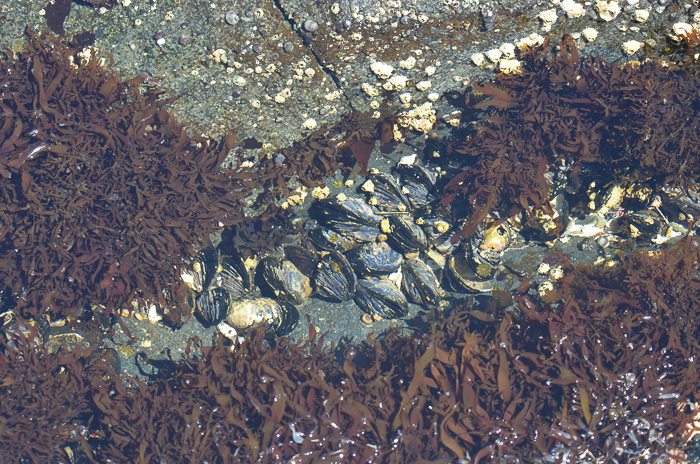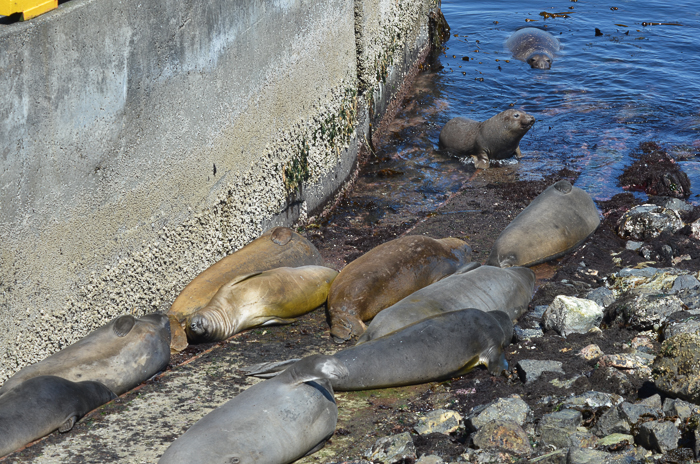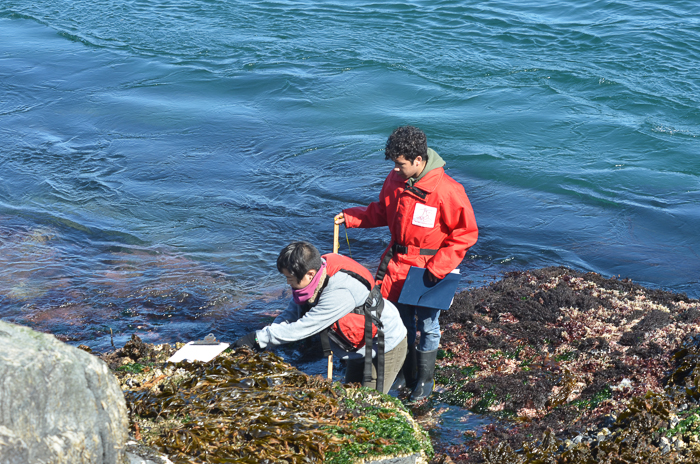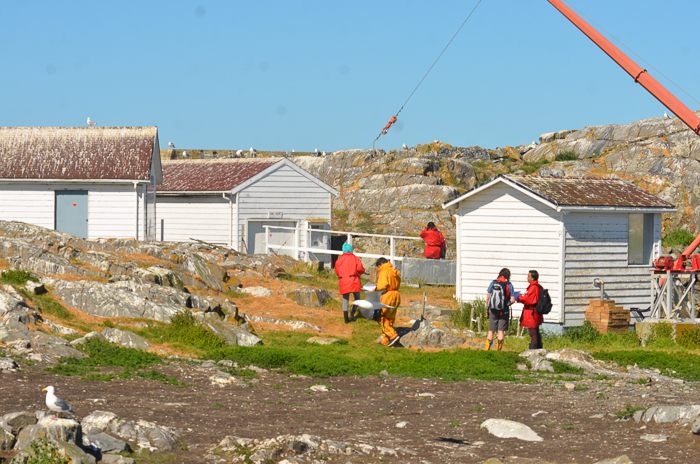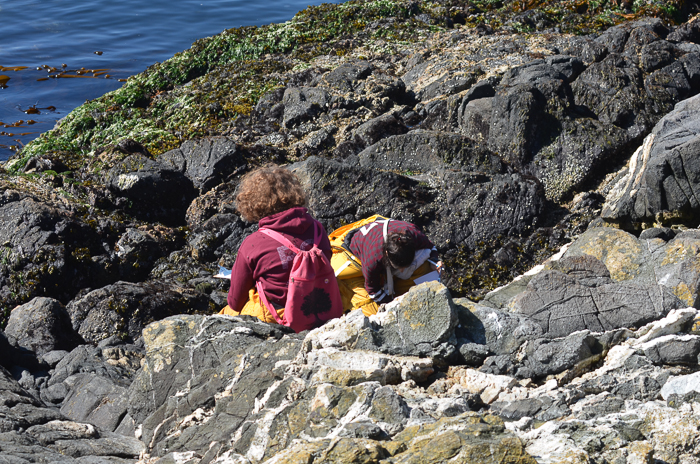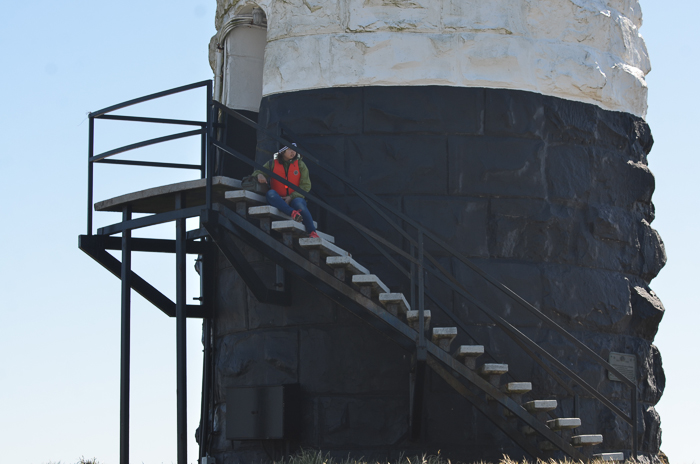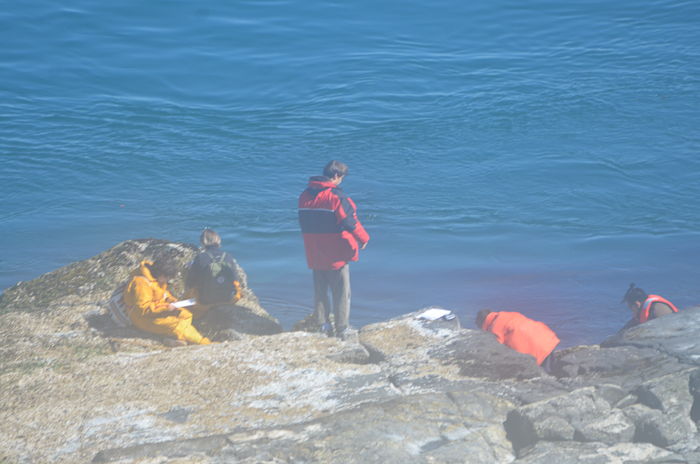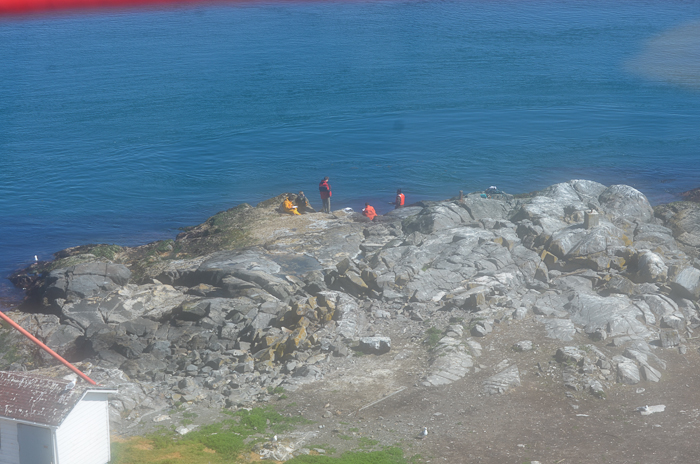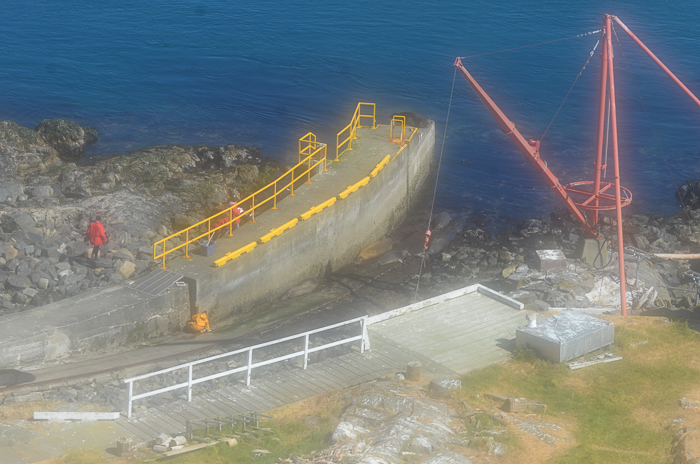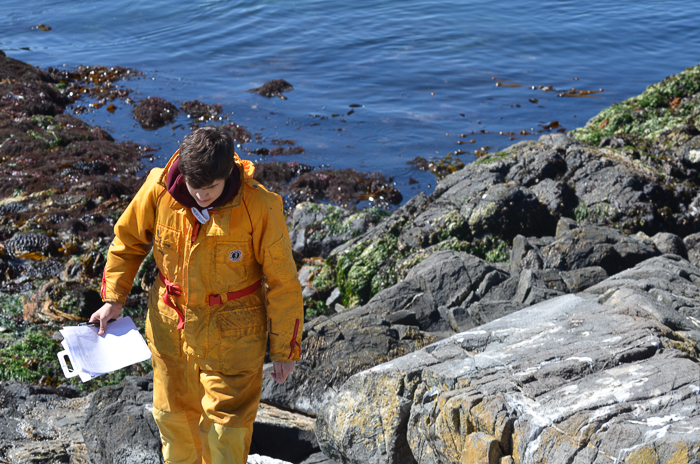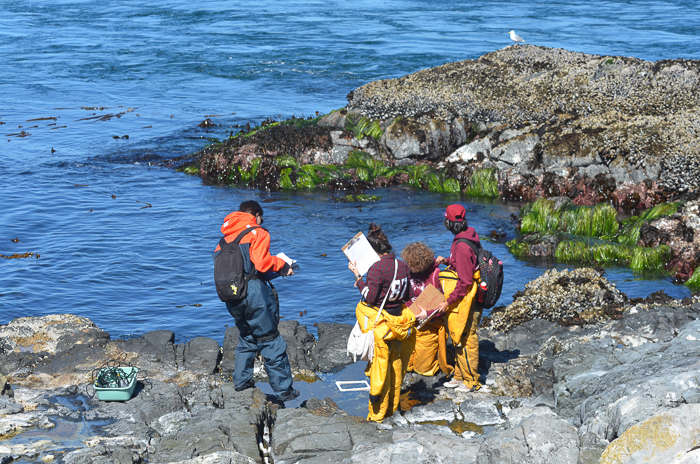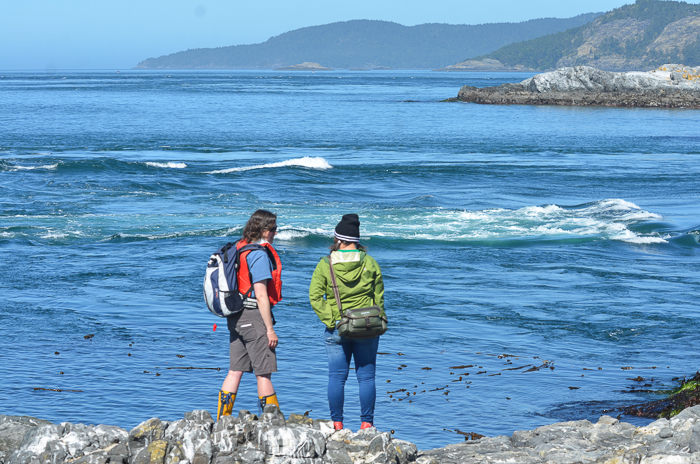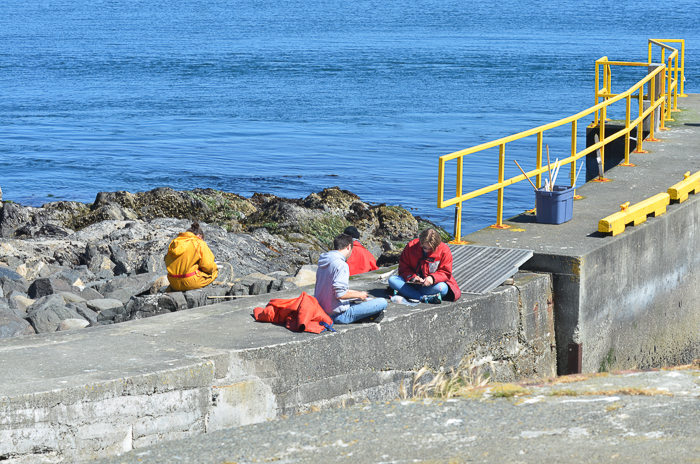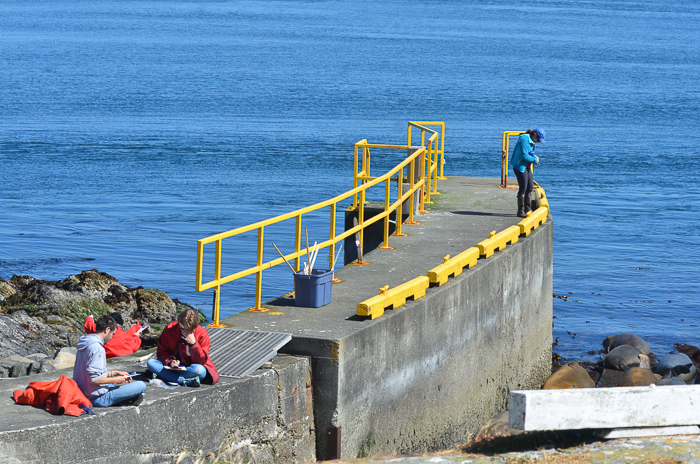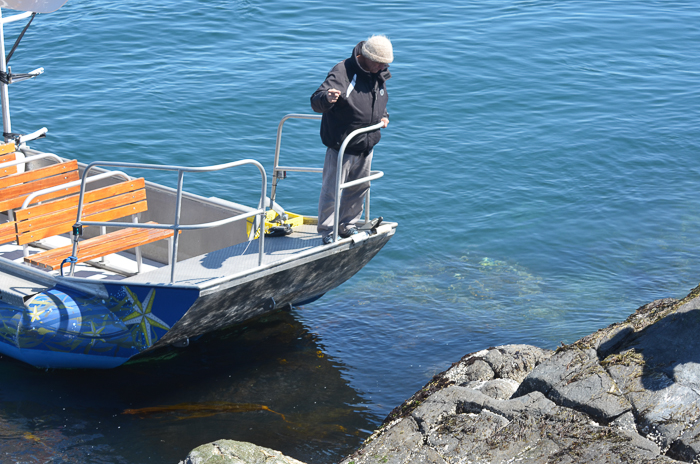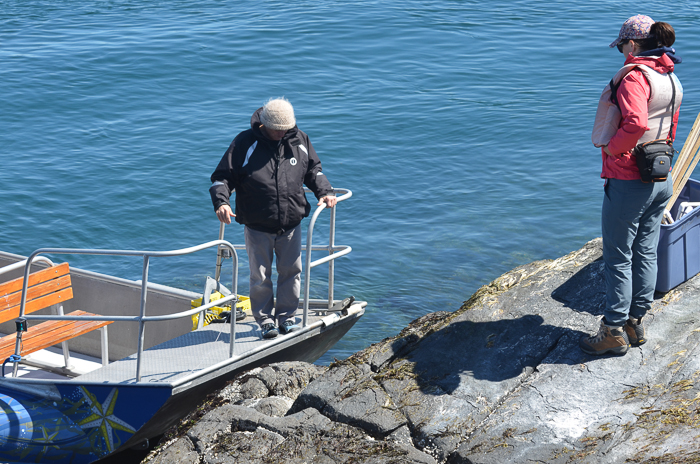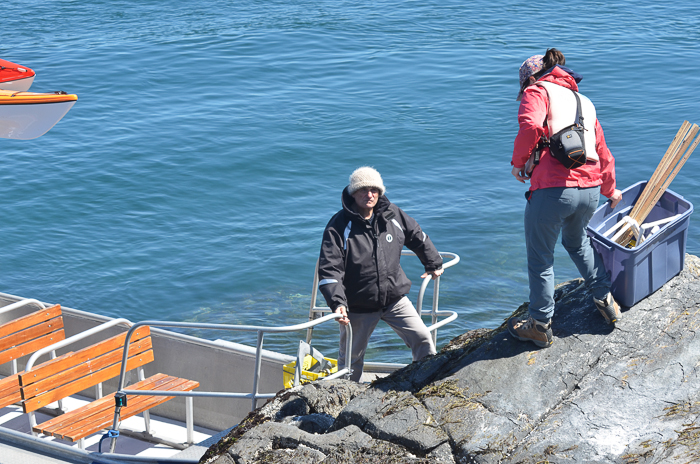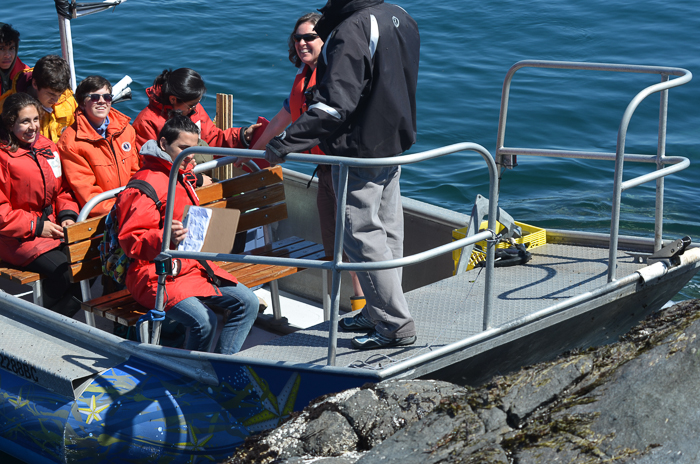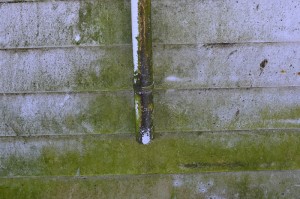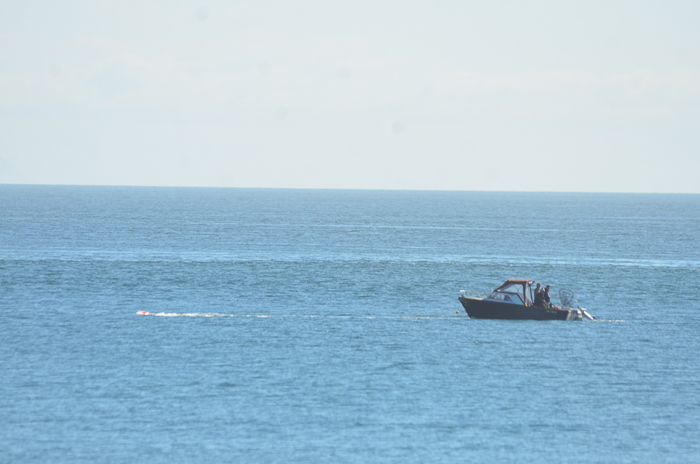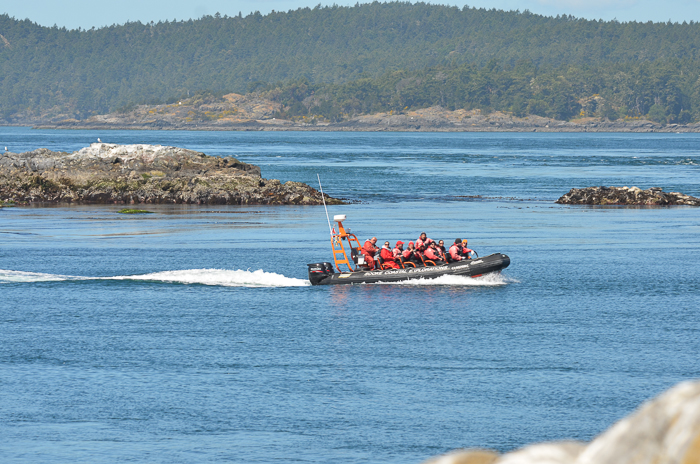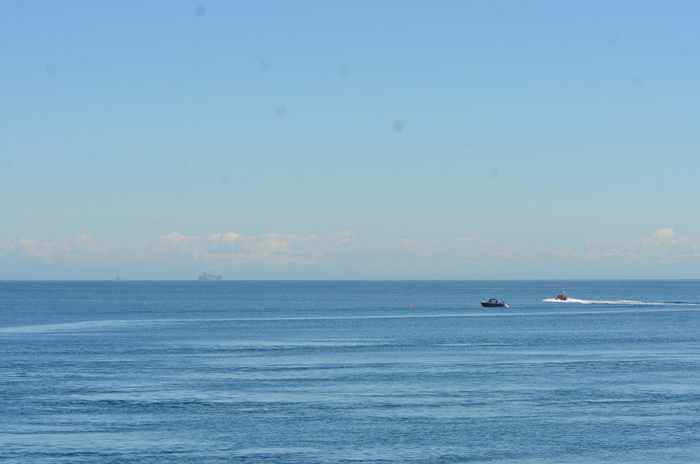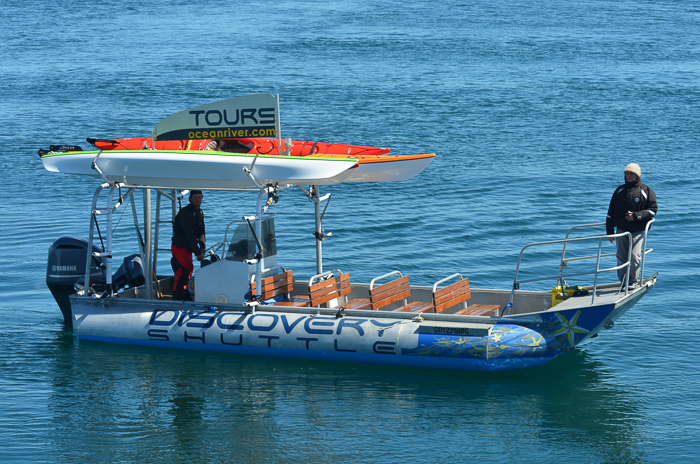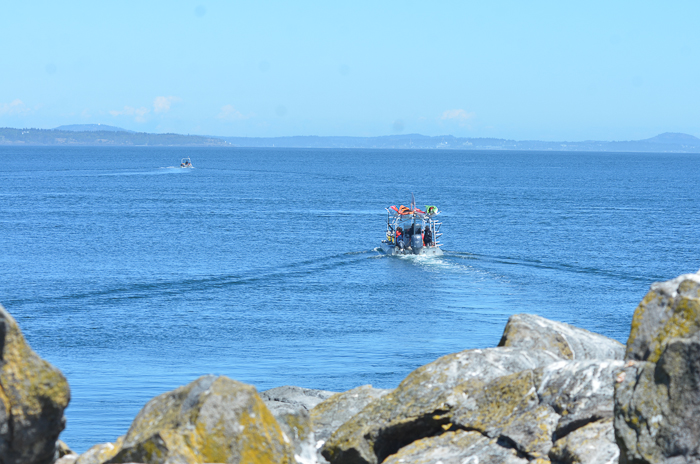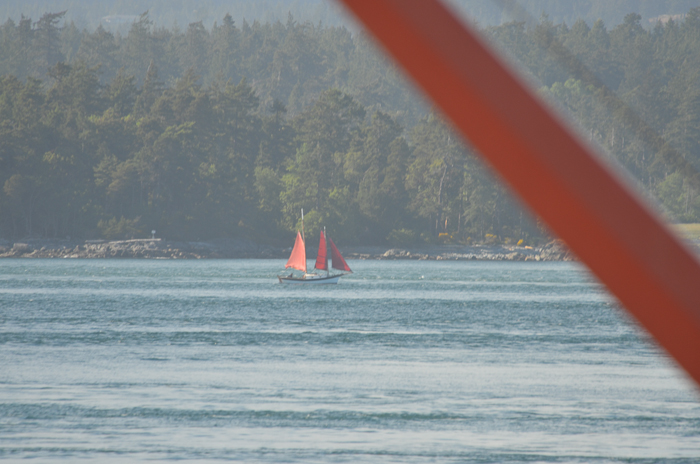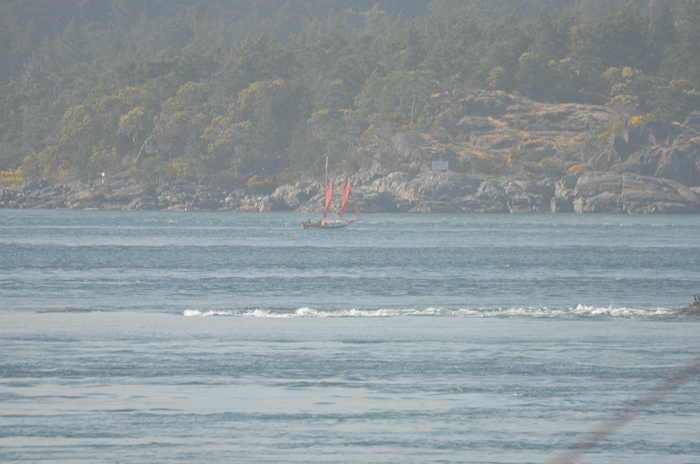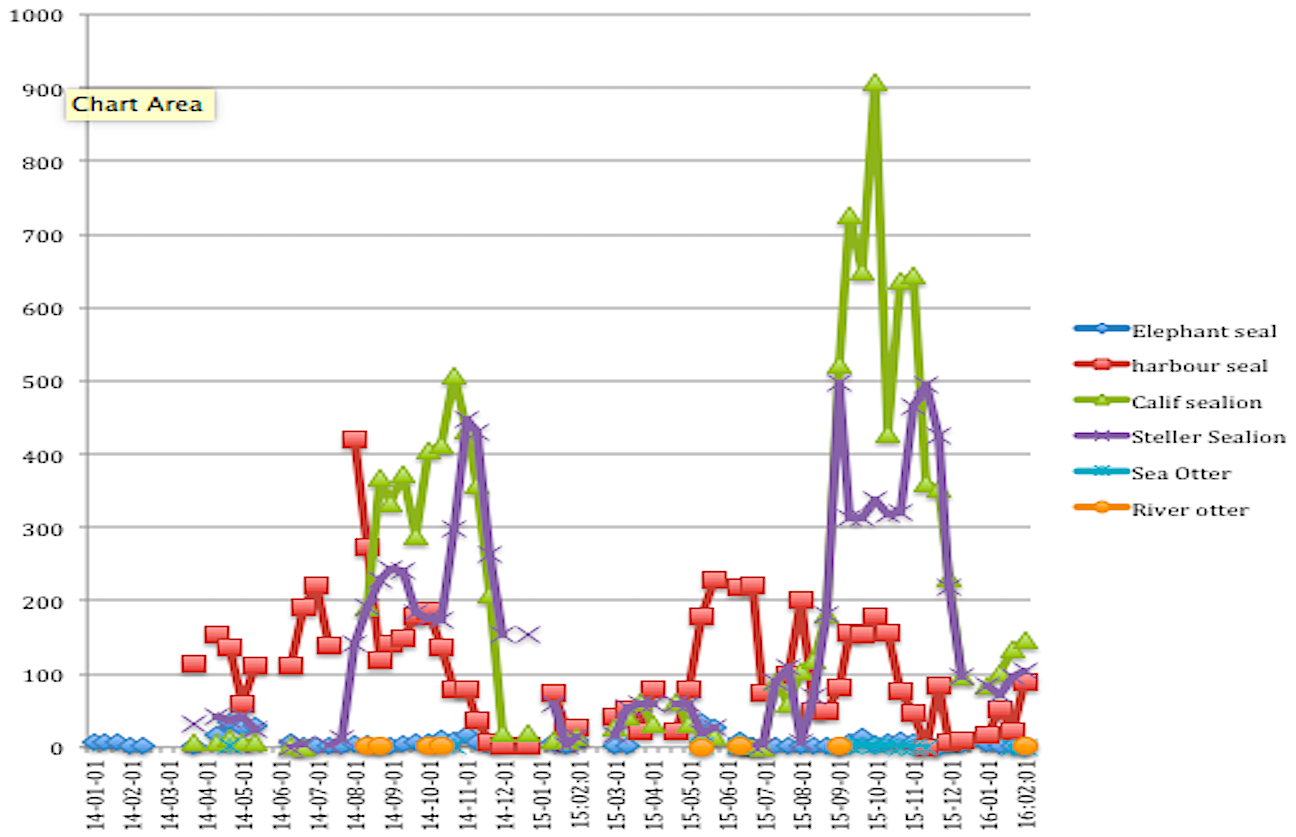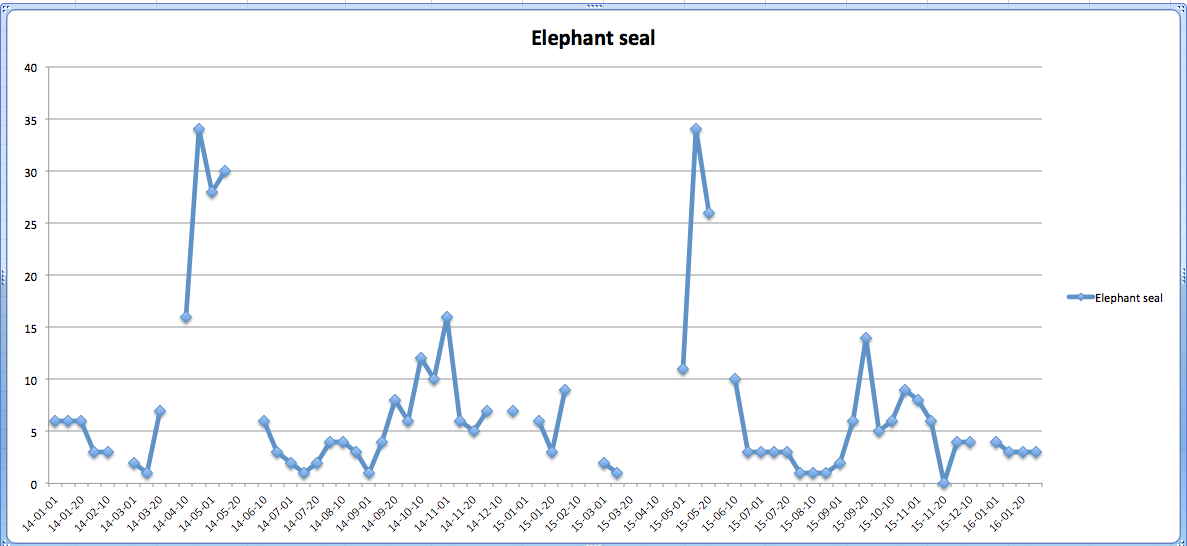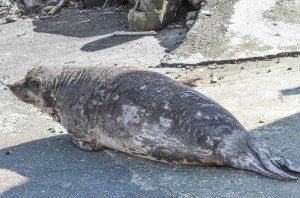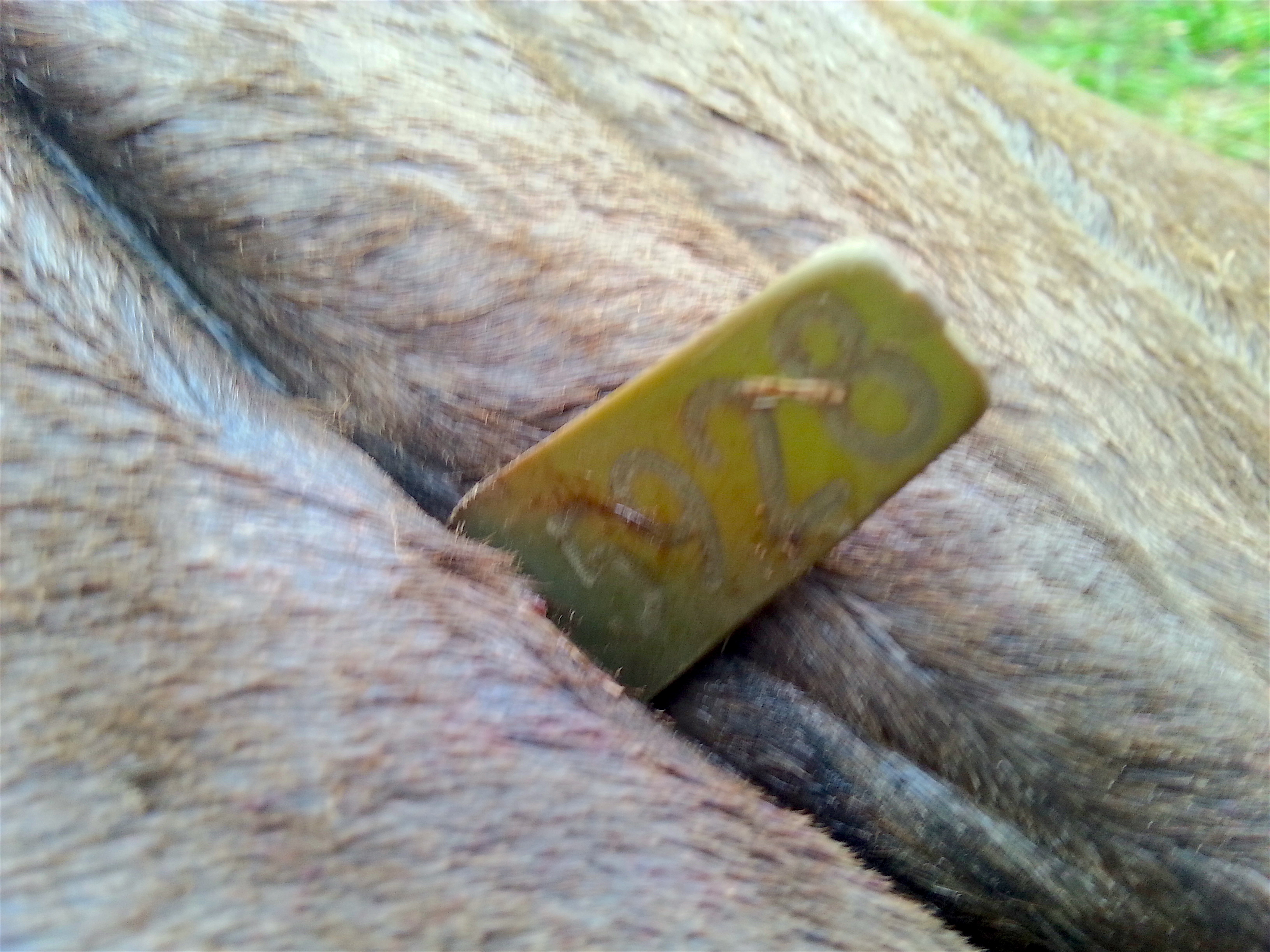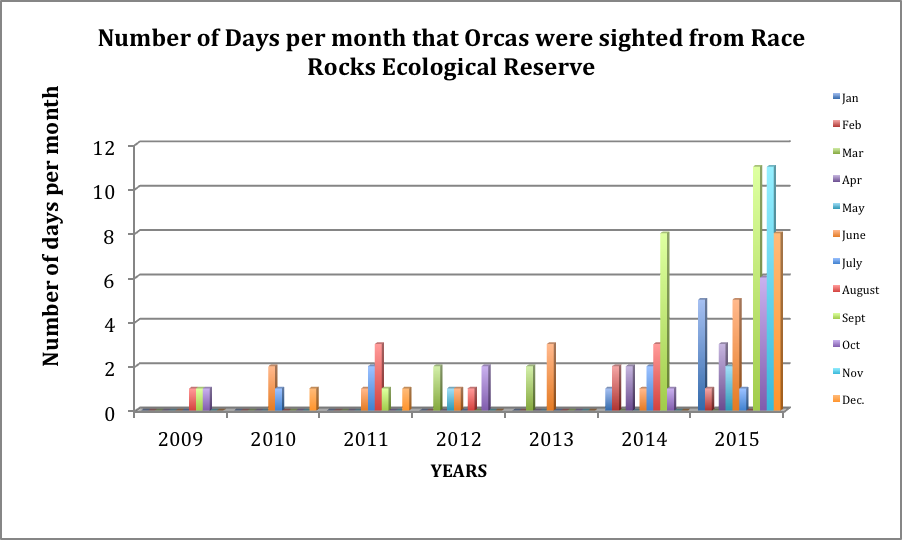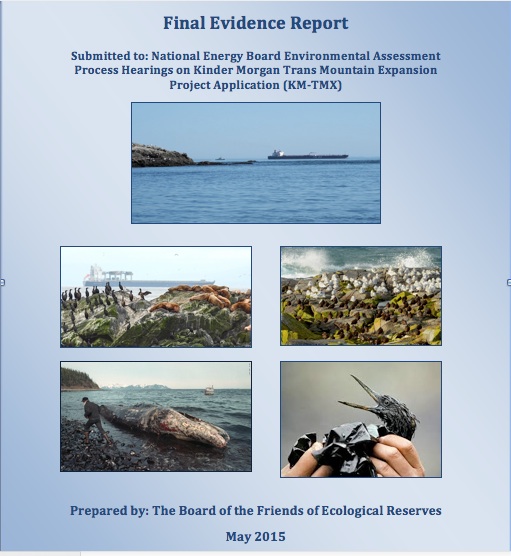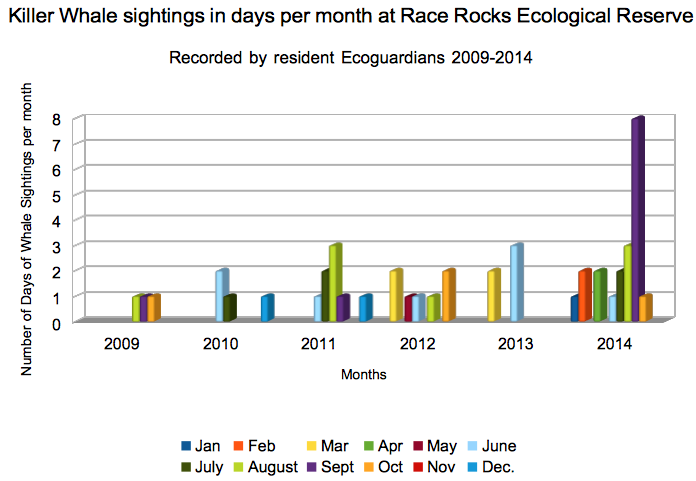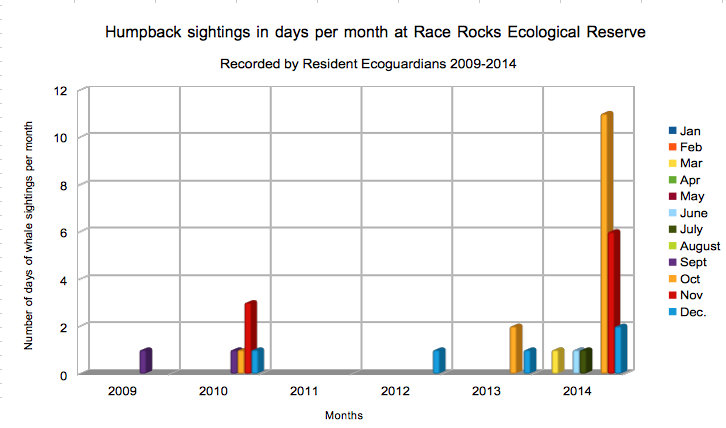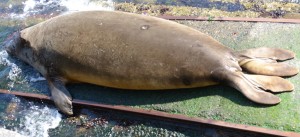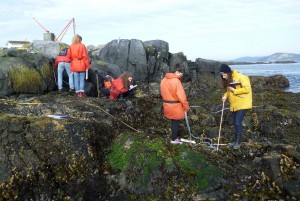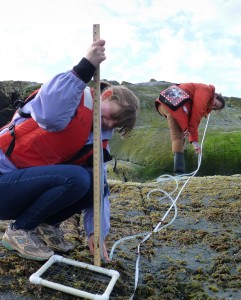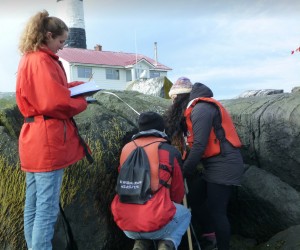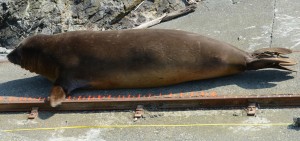Weather
- Visibility: 8 miles in the early morning, 15 later on
- Wind: 15-20 knots East, then North, then West
- Sky: foggy and overcast, then sunny, then overcast
- Scattered raindrops throughout the day
- Water: mostly calm, with swells in the afternoon
Ecological
- Maya and Tazi conducted 4 intertidal transects today.
- Studying an intertidal transect involves measuring out a certain distance from a peg, and then documenting the different species found every 0.5 metre.
- In some transects the 0.5 metres are measured by water elevation; in others simply by distance.
- By comparing the species found in every zone of the transect with transect data from previous decades, you can see the change in intertidal ecosystems due to climate change.
- We saw a California Sea Lion with the brand U374 and another with a tracker.
- While most of the gull eggs all look the same, one particular egg is quite different.
- Intertidal Transect
- Water level elevation
- 0.5 metres
- Photographing the zone
- Compass to determine direction of transect
- California Sea Lion with tracker
- Tracker
- Brand U374
- Moulting E-Seal
- Seagull eggs
- Seagull eggs
- Before
Maintenance
- Maya and I ran the fire pump in the morning.
- This added a few inches to the cistern.
- We removed the old Canadian flag and hoisted a fresh one.
- Tazi and I removed some algae.
- Ali whacked away at the thistles.
- We cleaned the solar panels.
Boats
- Over 150 sailboats from Victoria passed by Race Rocks in the late morning on their way towards the Western horizon.
- Some of them started to return as late as 22:30.
- The colours of their sales included: red, blue, white, fluorescent yellow, green, purple, black, orange, and many combinations of all of the above.
- Some standouts included the Miles Davis sail and the Union Jack.
- I couldn’t stop taking photos and ended up with dozens. Below is a selection of the best.
- One coastguard zodiac and a search and rescue boat appeared to be accompanying the sailboats.
- Several eco-tours came by, including one Eagle Wings tour that drove through the South Channel.
- Passing through the South Channel is prohibited as the width is too narrow.
- Eco-tour
- Eco-tour
- The first boats
- USA
- USA in tricky waters
- Wow!
- Search and Rescue boats
- Beautiful!
- Miles Davis
- Eco-tour
- Breathtaking!
- Kayakers
- Eagle Wings exiting South Channel

